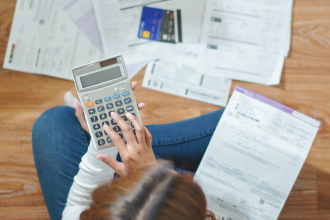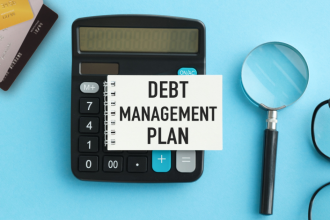Credit Sesame discusses how credit card debt reduced in August 2024 and what that means for consumers in the bigger debt picture.
Americans reduced their credit card debt in August 2024, a rare feat in recent years as consumer debt, including credit card debt, has reached new highs almost every month. Was August’s drop in credit card debt the beginning of a new trend or simply a blip not to be repeated? Investors and policymakers will watch closely to see if this is a turning point in consumer behavior.
One small step in the right direction
According to the latest figures from the Federal Reserve, revolving consumer debt dropped by $16.2 billion in August. Revolving debt includes personal lines of credit, store cards, and credit cards that can be borrowed from repeatedly as long as the account is open and the borrower stays within the credit limit. Most of the debt is credit card debt.
August’s decline in revolving debt was the largest monthly drop in the past three years and the second drop during that period. The numbers are adjusted for normal seasonal patterns, so the decline represented more than just a late-summer lull in consumer spending. Overall, revolving debt has soared since the economy reopened after the initial shock of the pandemic. Revolving debt has increased by over $340 billion in just three years.
To put August’s decline in perspective, it represented just about 0.1% of the total revolving debt outstanding. It does not translate to consumers suddenly getting a grip on their debt problems. Nevertheless, in contrast to the habitual increases in credit card debt, any decline is at least a small step in the right direction.
Overall debt is up while revolving debt is down
The August decline in revolving debt is hard to interpret because other consumer debt increased during the month. Consumers added $123.3 billion in nonrevolving debt in August. Nonrevolving debt represents loans rather than open lines of credit, though the Fed’s consumer credit figures do not include mortgages. Notably, that increase exceeded the decline in revolving debt. Non-mortgage consumer debt grew during August.
The decline in revolving debt is still good news because credit card debt is particularly expensive. Interest rates on credit card debt are typically significantly higher than rates on auto, personal, or student loans. This may mean that consumers are choosing more cost-effective forms of debt. Ultimately, all debt must be repaid. So the continued increases in overall consumer debt remain cause for concern.
How much debt is too much?
How concerned should America be about the ongoing steady rise in debt? Some view it as a sign of consumer confidence. Prices rise steadily from year to year, so the total dollar figures for most economic measures- wages, GDP, or debt- naturally tend to increase over the long run. In that sense, the rise in consumer debt over the past few years may not be unexpected. Total consumer debt has risen by 14.28% over the past three years, pretty much in line with the 15.15% increase in inflation over the same period.
If inflation makes debt increases understandable, those increases still represent higher monthly consumer payments. Opinion on “too much debt” varies, but one clear warning sign is when consumers can’t keep up with their payments. The steady rise in delinquency rates for consumer debt payments indicates that some consumers have reached their breaking points. Delinquency rates are rising for all forms of consumer credit, especially for credit card debt.
Tips for reducing borrowing
If you want to reduce your debt and borrowing, here are some steps you can take.
1. Always try to pay more than the minimum amount
Minimum monthly payments on credit cards usually represent a small amount of your total balance. If you pay only the minimum payments and have a balance remaining, you will still be paying interest, which won’t be paid as fast. Always try to pay more than the minimum payment. If possible, pay your balance off in full every month. If you can’t do this, paying more than the minimum will slow the pace at which interest charges pile up. The less interest you owe, the more of your payments can go to reducing your debt total.
2. Freeze credit card use if you cannot pay more than the minimum
If you cannot afford to make more than the minimum payment on any of your credit cards, it may be time to stop using them for a while. Take them out of your wallet and put them in a safe place. This might seem drastic if you still keep up with the minimum payments, but when you can’t pay anymore, it’s a sign you’re close to being over-extended. If you keep on adding credit card debt, you may find even the minimum payments are too much for you.
3. Look for opportunities to refinance credit card debt
Credit card debt is very expensive and not ideal for long-term debt. If you carry a balance year after year, you continually pay high interest on that debt. Look for ways to lower the interest on some of that debt. Zero-interest balance transfer cards and personal loans can be lower-cost alternatives. Do this as part of a bigger plan to reduce your regular borrowing. The idea is to reduce your credit card balances permanently and not just shift them into other debts so you can start building those balances up again.
4. Work on your credit score
Consider a credit builder account as part of a plan to raise your credit score, which may lead to better interest rates and borrowing terms. In turn, this can reduce the cost of your debt. Start by checking your credit report for errors and ensuring all your information is accurate. Paying bills on time and reducing the amount of credit you use (credit utilization) are key factors in boosting your score. By working steadily to raise your credit score, you can potentially qualify for lower interest rates on loans and credit cards, making it easier to manage and reduce your revolving debt.
The decline in August 2024’s total credit card debt may be too small to have long-term significance. However, it is a reminder that it is possible to pay down debt rather than continuing to grow it month after month. Use this as motivation to turn debt reduction into a habit.
If you enjoyed Credit card debt reduced in August 2024 you may like,
Disclaimer: The article and information provided here are for informational purposes only and are not a substitute for professional advice.
Read the full article here
















